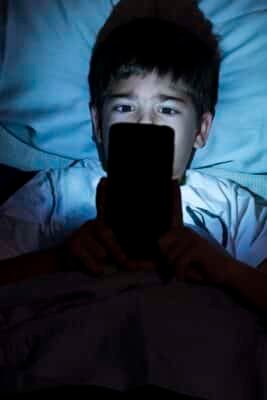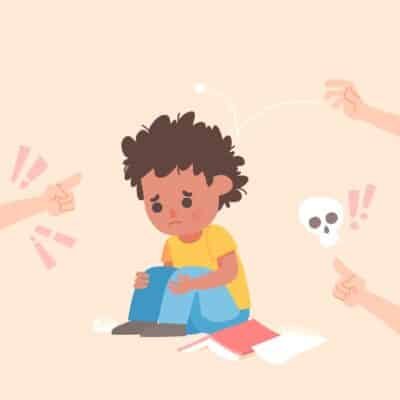Fear and anxiety, that spine-tingling, heart-pounding emotion, is something we’ve all experienced at some point in our lives. It’s the jittery feeling before a big test, the terror of the unknown lurking in the dark, and the ghostly whispers of doubt that dance in our minds. But when it comes to middle school children, fear and anxiety causes nightmares that can be truly terrifying.
In this exploration, we’ll delve into the world of fear and anxiety, its relationship with nightmares, and why middle schoolers are particularly susceptible. Most importantly, what we can do to help them face their fears and anxiety.
The Emotion of Fear
Fear is a natural emotion that humans experience in response to perceived danger or threat and is essential for our survival. It triggers the fight or flight response, which prepares us to respond quickly in a dangerous situation. It can also help us to be more cautious and aware of potential dangers in our environment. For example, if we are walking alone at night in a dark alley, fear can help us to be more alert and aware of our surroundings.
As author and psychologist Susan Jeffers famously said, “Feel the fear and do it anyway.”
When our body senses danger, cortisol and adrenaline hormones are released to either fight off the threat or flee it; until our brain provides us with an “all clear” signal. While fear can be useful in keeping us safe, excessive fear or chronic fear causes mental health issues such as anxiety and depression.
Fear and Anxiety: Connection to Nightmares
 While fear can be our ally, it can also become our worst enemy, especially for middle school children. Anxiety is like fear on steroids. It’s the constant worry, the racing thoughts, the feeling of sadness, even when there’s no immediate threat. Sadly, for many young minds, this anxiety becomes the breeding ground for nightmares.
While fear can be our ally, it can also become our worst enemy, especially for middle school children. Anxiety is like fear on steroids. It’s the constant worry, the racing thoughts, the feeling of sadness, even when there’s no immediate threat. Sadly, for many young minds, this anxiety becomes the breeding ground for nightmares.
One study that investigated nightmares among Palestinian youth who had been exposed to prolonged war conflict found, that fear causes nightmares due to real-life traumas. They even interfered with school functioning! Threat Simulation Theory suggested that these youth were unable to recovery naturally, so trauma-related defense mechanisms such as nightmares kicks in.
It remains difficult to pinpoint exactly why nightmares occur. However, some evidence points towards fatigue or sleeping on an uncomfortably hard mattress as contributing factors. Other potential triggers could include stress, anxiety and an irregular sleeping schedule. It is therefore crucial that sleep habits are established to create healthy routines and eliminate electronic devices prior to bedtime.
Why Are Middle School Children Highly Affected by Fear and Anxiety?
 Dreams tend to strike children under five, as a response to developmental changes or transitions. Like starting school, moving neighborhoods or experiencing family divorce/remarriage. It’s that transitional period between childhood and adolescence, when significant change and growth occur. Similarly, children are anxious of fitting into groups, making friends, and performing well academically.
Dreams tend to strike children under five, as a response to developmental changes or transitions. Like starting school, moving neighborhoods or experiencing family divorce/remarriage. It’s that transitional period between childhood and adolescence, when significant change and growth occur. Similarly, children are anxious of fitting into groups, making friends, and performing well academically.
At this age, children develop vivid imaginations which are fed by both real and fictional experiences. So frightening images from their imagination or or phobias can easily turn into nightmares. It a is a part of developmental process, helping children understand their world.
Dr. Judith Owens, a pediatric sleep specialist, explains,
“Children’s imaginations are like wild horses, and when fear grips them during the day, it can gallop into their dreams at night.”
Solutions to Tame Fear and Anxiety
Here are the ABCs for taming fear and anxiety in your children:
A for Awareness: The first step is to acknowledge their fears. Listen to your child’s concerns without judgment. Gently remind them that it was just a dream, and they are safe.
B for Breathing: Teach your child simple breathing exercises. Deep breaths can calm the racing heart and ease anxiety. Make it a fun activity by pretending to blow up balloons with each breath.
C for Communication: Encourage open communication. Let your child know they can always talk to you about their fears. Also make sure that your child avoids experiences which reminisce their scary dreams, such as nasty interactions between other children or television programs
D for Distraction: Provide distractions before bedtime. A comforting bedtime story or a soothing lullaby can help shift their focus away from fear and towards relaxation.
There are various practical solutions for helping your child. But everything comes to one conclusion- Be there for them! It’s all your child will ever ask. Indeed, the fear of abandonment is the deepest of all!

Conclusion
Fear, anxiety, and nightmares are formidable foes, especially for middle school children. However, if encompassed with love and empathy we can help them face their fears and sleep peacefully through the night. Remember, as American author H.P. Lovecraft once said, “The oldest and strongest emotion of mankind is fear, and the oldest and strongest kind of fear is fear of the unknown.” Let’s help our middle schoolers turn the unknown into the friendliness and make their sweet dreams come true.





